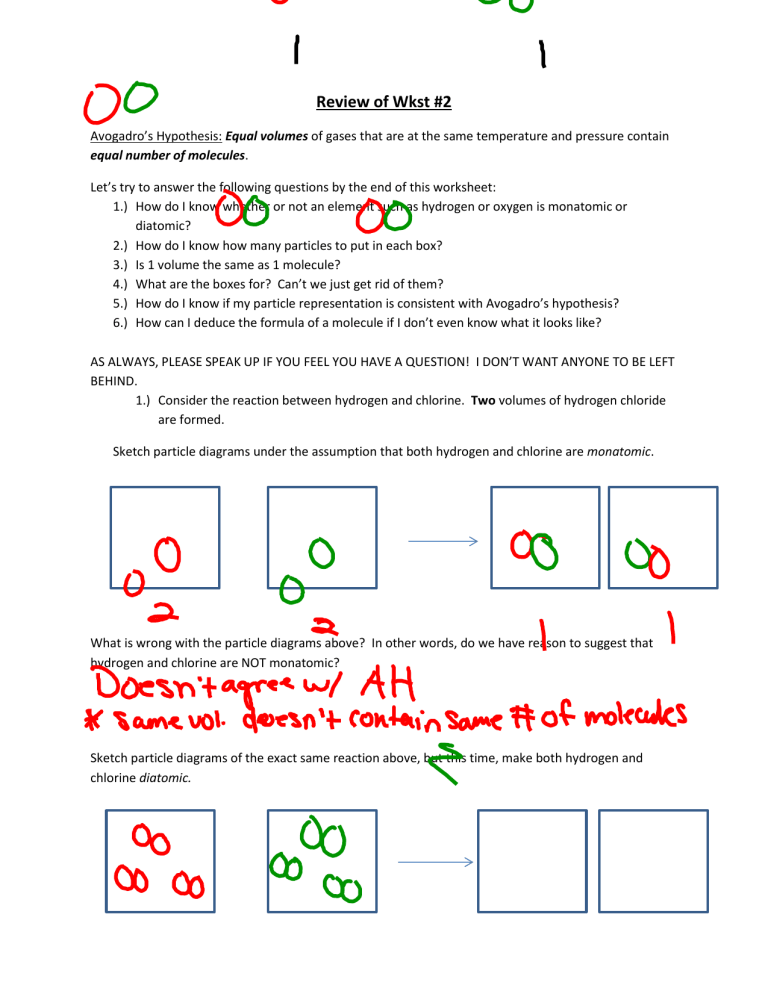Review of Wkst #2

Review of Wkst #2
Avogadro’s Hypothesis: Equal volumes of gases that are at the same temperature and pressure contain
equal number of molecules.
Let’s try to answer the following questions by the end of this worksheet:
1.) How do I know whether or not an element such as hydrogen or oxygen is monatomic or diatomic?
2.) How do I know how many particles to put in each box?
3.) Is 1 volume the same as 1 molecule?
4.) What are the boxes for? Can’t we just get rid of them?
5.) How do I know if my particle representation is consistent with Avogadro’s hypothesis?
6.) How can I deduce the formula of a molecule if I don’t even know what it looks like?
AS ALWAYS, PLEASE SPEAK UP IF YOU FEEL YOU HAVE A QUESTION! I DON’T WANT ANYONE TO BE LEFT
BEHIND.
1.) Consider the reaction between hydrogen and chlorine. Two volumes of hydrogen chloride are formed.
Sketch particle diagrams under the assumption that both hydrogen and chlorine are monatomic.
What is wrong with the particle diagrams above? In other words, do we have reason to suggest that hydrogen and chlorine are NOT monatomic?
Sketch particle diagrams of the exact same reaction above, but this time, make both hydrogen and chlorine diatomic.
What is different about this particle diagram compared to the first one besides the fact that one is monatomic and the other diatomic?
Sketch particle diagrams representing 2 volumes of hydrogen gas reacting with 1 volume of oxygen gas to form 2 volumes of gaseous water.
Again, sketch the diagrams under the assumption that both hydrogen and oxygen are monatomic.
What is wrong with the particle diagrams above?
Once again, adjust your particle diagrams from above so that now both hydrogen and oxygen are diatomic.
Is this new particle diagram consistent with Avogadro’s hypothesis? How do you know?
Finally, sketch the reaction of 2 volumes of nitric oxide with 1 volume of oxygen gas that form 2 volumes of a reddish brown gas. Deduce the formula for this reddish-brown gas. Remember, you have already shown that oxygen is diatomic.
Is this representation consistent with Avogadro’s hypothesis? How do you know? What is the formula for this reddish-brown gas?








